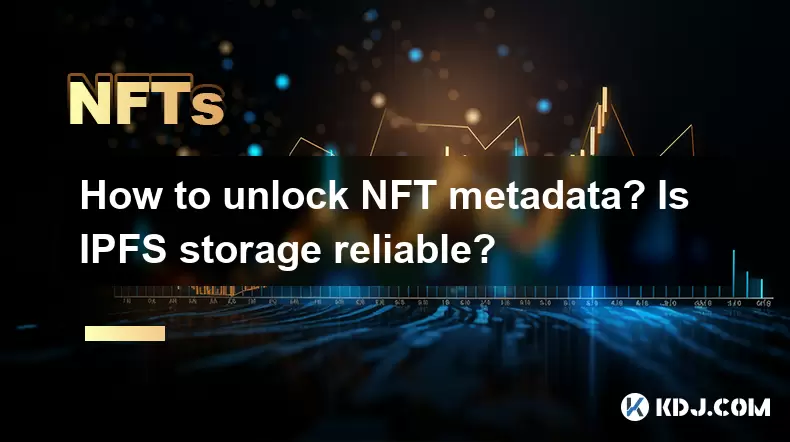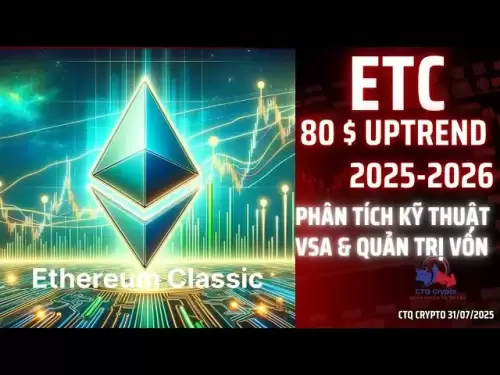-
 Bitcoin
Bitcoin $118400
0.47% -
 Ethereum
Ethereum $3836
2.20% -
 XRP
XRP $3.157
2.98% -
 Tether USDt
Tether USDt $0.9999
-0.03% -
 BNB
BNB $801.5
1.31% -
 Solana
Solana $180.9
2.07% -
 USDC
USDC $0.9999
-0.02% -
 Dogecoin
Dogecoin $0.2225
2.50% -
 TRON
TRON $0.3285
-1.02% -
 Cardano
Cardano $0.7789
2.60% -
 Hyperliquid
Hyperliquid $43.60
2.39% -
 Sui
Sui $3.892
4.41% -
 Stellar
Stellar $0.4229
3.34% -
 Chainlink
Chainlink $18.01
3.98% -
 Hedera
Hedera $0.2745
6.77% -
 Bitcoin Cash
Bitcoin Cash $582.3
3.38% -
 Avalanche
Avalanche $23.77
1.04% -
 Ethena USDe
Ethena USDe $1.001
0.01% -
 Toncoin
Toncoin $3.493
3.59% -
 Litecoin
Litecoin $110.0
2.48% -
 UNUS SED LEO
UNUS SED LEO $8.936
-0.37% -
 Shiba Inu
Shiba Inu $0.00001304
2.49% -
 Uniswap
Uniswap $9.999
1.09% -
 Polkadot
Polkadot $3.897
3.26% -
 Monero
Monero $308.6
-0.83% -
 Dai
Dai $0.9999
-0.01% -
 Bitget Token
Bitget Token $4.504
-0.04% -
 Pepe
Pepe $0.00001154
2.95% -
 Cronos
Cronos $0.1471
3.06% -
 Ethena
Ethena $0.6691
19.53%
How to unlock NFT metadata? Is IPFS storage reliable?
NFT metadata, stored in JSON format on IPFS, is crucial for uniqueness; access it via token ID and contract address for detailed NFT info.
May 16, 2025 at 09:50 am

Unlocking NFT metadata and understanding the reliability of IPFS storage are crucial aspects of navigating the world of non-fungible tokens (NFTs). NFT metadata contains essential information about an NFT, such as its name, description, and any associated media files. Meanwhile, IPFS (InterPlanetary File System) is a decentralized storage solution commonly used for storing NFT metadata. In this article, we will delve into the process of unlocking NFT metadata and evaluate the reliability of IPFS storage.
Understanding NFT Metadata
NFT metadata is the backbone of any non-fungible token. It provides the detailed information that makes each NFT unique. Typically, NFT metadata includes fields like name, description, image, and sometimes additional attributes that describe the NFT's characteristics. This metadata is stored in a JSON format and is usually linked to the NFT via a URI.
To access the metadata, you need to know the token ID and the smart contract address of the NFT. Once you have this information, you can retrieve the metadata URI from the smart contract. The metadata URI often points to an IPFS address, where the actual JSON file is stored.
Steps to Unlock NFT Metadata
Unlocking NFT metadata involves a few straightforward steps. Here is how you can do it:
Obtain the Token ID and Contract Address: You can find these details on the NFT's listing page on marketplaces like OpenSea or Rarible. For example, if you are using OpenSea, navigate to the NFT's page, and you will find the contract address and token ID displayed.
Retrieve the Metadata URI: Use a blockchain explorer like Etherscan to interact with the smart contract. Navigate to the contract address, find the
tokenURIfunction, and input the token ID to get the metadata URI. This URI will typically start withipfs://.Access the Metadata File: To view the metadata, you need to convert the IPFS URI to a gateway URL. For example, if the URI is
ipfs://Qm..., you can access it by changing it tohttps://ipfs.io/ipfs/Qm.... This URL will lead you to the JSON file containing the NFT metadata.Read the Metadata: Open the JSON file in a text editor or a web browser to view the metadata. You will see fields like
name,description, andimage, which contain the detailed information about the NFT.
What is IPFS and How Does it Work?
IPFS, or InterPlanetary File System, is a protocol and network designed to create a decentralized method of storing and sharing files. Instead of using a centralized server, IPFS uses a distributed network of nodes to store data. Each file is given a unique content address, known as a CID (Content Identifier), which allows users to locate and retrieve the file from any node on the network.
When you upload a file to IPFS, it is broken down into smaller chunks, and each chunk is given a unique hash. These chunks are then distributed across the IPFS network. When someone wants to retrieve the file, they use the CID to locate and reassemble the chunks into the original file.
Is IPFS Storage Reliable?
The reliability of IPFS storage is a common concern among users, especially those storing valuable NFT metadata. IPFS offers several advantages that contribute to its reliability:
Decentralization: Since IPFS operates on a decentralized network, there is no single point of failure. This means that even if some nodes go offline, the data remains accessible through other nodes.
Redundancy: Files stored on IPFS are replicated across multiple nodes, increasing the likelihood that the data will remain available. This redundancy is particularly beneficial for ensuring the long-term availability of NFT metadata.
Content Addressing: IPFS uses content addressing, which means that the file's location is determined by its content rather than its physical location. This ensures that the data remains accessible as long as at least one node on the network has a copy.
However, there are also potential drawbacks to consider:
Pinning Services: To ensure long-term availability, users often rely on pinning services, which are centralized services that keep files pinned to the network. If these services fail or go offline, the data could become inaccessible.
Network Dependency: The availability of data on IPFS depends on the health and participation of the network. If the network experiences issues or if nodes stop participating, it can affect the accessibility of the data.
Alternatives to IPFS for Storing NFT Metadata
While IPFS is a popular choice for storing NFT metadata, there are other alternatives that users can consider:
Centralized Storage: Services like AWS S3 or Google Cloud Storage offer centralized storage solutions that are highly reliable and widely used. However, they come with the risk of a single point of failure and potential data loss if the service goes down.
Arweave: Arweave is a decentralized storage solution that promises permanent storage. Unlike IPFS, which relies on network participation, Arweave uses a blockchain-based approach to ensure data is stored indefinitely. This can be a more reliable option for storing critical NFT metadata.
Filecoin: Filecoin is another decentralized storage network that incentivizes users to store and share data. It uses a cryptocurrency-based system to reward users for providing storage, which can enhance the reliability and availability of stored data.
Accessing NFT Metadata on Different Platforms
Different platforms and marketplaces may have varying methods for accessing NFT metadata. Here's how you can do it on some popular platforms:
OpenSea: On OpenSea, you can find the metadata URI by navigating to the NFT's page, clicking on the three dots next to the NFT's name, and selecting "View on Etherscan." From there, you can interact with the smart contract to retrieve the metadata URI.
Rarible: Rarible also provides access to metadata through its platform. Navigate to the NFT's page, click on the "Details" tab, and you will find the metadata URI listed under "Token URI."
Foundation: On Foundation, you can access metadata by clicking on the NFT's page, then clicking on the "Details" section. The metadata URI will be listed there, allowing you to retrieve the JSON file.
FAQs
1. Can I edit the metadata of an NFT after it has been minted?
Editing the metadata of an NFT after it has been minted depends on the smart contract's functionality. Some contracts allow for metadata updates, while others do not. If the contract supports it, you can update the metadata by changing the URI that points to the JSON file.
2. How do I ensure the long-term availability of my NFT metadata on IPFS?
To ensure the long-term availability of your NFT metadata on IPFS, you can use pinning services like Pinata or Infura. These services will keep your files pinned to the network, ensuring they remain accessible even if other nodes go offline.
3. What happens if the IPFS network goes down?
If the IPFS network experiences issues, the availability of your NFT metadata could be affected. However, due to the decentralized nature of IPFS, the data is likely to remain accessible through other nodes on the network. Using pinning services can further enhance the reliability of your data.
4. Can I use IPFS for storing large files associated with my NFT?
Yes, IPFS can be used to store large files associated with your NFT. However, keep in mind that the initial upload and subsequent retrieval of large files may take longer due to the decentralized nature of the network. Additionally, using pinning services can help ensure the long-term availability of these large files.
Disclaimer:info@kdj.com
The information provided is not trading advice. kdj.com does not assume any responsibility for any investments made based on the information provided in this article. Cryptocurrencies are highly volatile and it is highly recommended that you invest with caution after thorough research!
If you believe that the content used on this website infringes your copyright, please contact us immediately (info@kdj.com) and we will delete it promptly.
- Pudgy Penguins Price Prediction: Buying Opportunity or Insider Dump?
- 2025-07-31 18:50:35
- Penny Coin Power: Unearthing 20x Potential in Undervalued Crypto
- 2025-07-31 20:10:14
- Shrapnel, GalaChain, and China Gaming: A New Frontier
- 2025-07-31 19:10:35
- Mutuum Finance, Bitcoin, and Market Analysis: Decoding the Latest Trends
- 2025-07-31 19:30:13
- Dogecoin Howl: Bullish Signals and Analyst Bites – Is the Meme Coin Ready to Pounce?
- 2025-07-31 18:30:16
- Decoding Crypto Presales, Ethereum's Role, and Navigating a Tricky Altcoin Season
- 2025-07-31 18:30:16
Related knowledge

Is it possible to get a refund on an NFT?
Jul 21,2025 at 08:35pm
Understanding NFT Transactions and RefundsWhen you purchase an NFT (Non-Fungible Token), the transaction is typically recorded on a blockchain, making...

What happens to NFTs when the owner dies?
Jul 22,2025 at 02:43pm
Legal Ownership and Digital AssetsWhen an individual owns NFTs, the question of what happens to these assets upon their death is a pressing one. NFTs ...

What are the tax implications of gifting an NFT?
Jul 19,2025 at 04:21am
Understanding the Basics of NFT GiftingGifting a Non-Fungible Token (NFT) involves transferring ownership from one individual to another without recei...

Can you trade NFTs on your phone?
Jul 18,2025 at 04:29am
Trading NFTs on Mobile DevicesYes, you can trade NFTs on your phone, and the process has become increasingly streamlined thanks to a variety of mobile...

How to find out about upcoming NFT mints?
Jul 18,2025 at 11:50am
Exploring NFT Minting OpportunitiesUnderstanding the landscape of upcoming NFT mints is crucial for collectors, investors, and creators who wish to st...

What is an allowlist or whitelist for an NFT mint?
Jul 20,2025 at 07:14pm
Understanding the Concept of an Allowlist for NFT MintingAn allowlist, also commonly referred to as a whitelist, is a mechanism used in the NFT mintin...

Is it possible to get a refund on an NFT?
Jul 21,2025 at 08:35pm
Understanding NFT Transactions and RefundsWhen you purchase an NFT (Non-Fungible Token), the transaction is typically recorded on a blockchain, making...

What happens to NFTs when the owner dies?
Jul 22,2025 at 02:43pm
Legal Ownership and Digital AssetsWhen an individual owns NFTs, the question of what happens to these assets upon their death is a pressing one. NFTs ...

What are the tax implications of gifting an NFT?
Jul 19,2025 at 04:21am
Understanding the Basics of NFT GiftingGifting a Non-Fungible Token (NFT) involves transferring ownership from one individual to another without recei...

Can you trade NFTs on your phone?
Jul 18,2025 at 04:29am
Trading NFTs on Mobile DevicesYes, you can trade NFTs on your phone, and the process has become increasingly streamlined thanks to a variety of mobile...

How to find out about upcoming NFT mints?
Jul 18,2025 at 11:50am
Exploring NFT Minting OpportunitiesUnderstanding the landscape of upcoming NFT mints is crucial for collectors, investors, and creators who wish to st...

What is an allowlist or whitelist for an NFT mint?
Jul 20,2025 at 07:14pm
Understanding the Concept of an Allowlist for NFT MintingAn allowlist, also commonly referred to as a whitelist, is a mechanism used in the NFT mintin...
See all articles

























































































